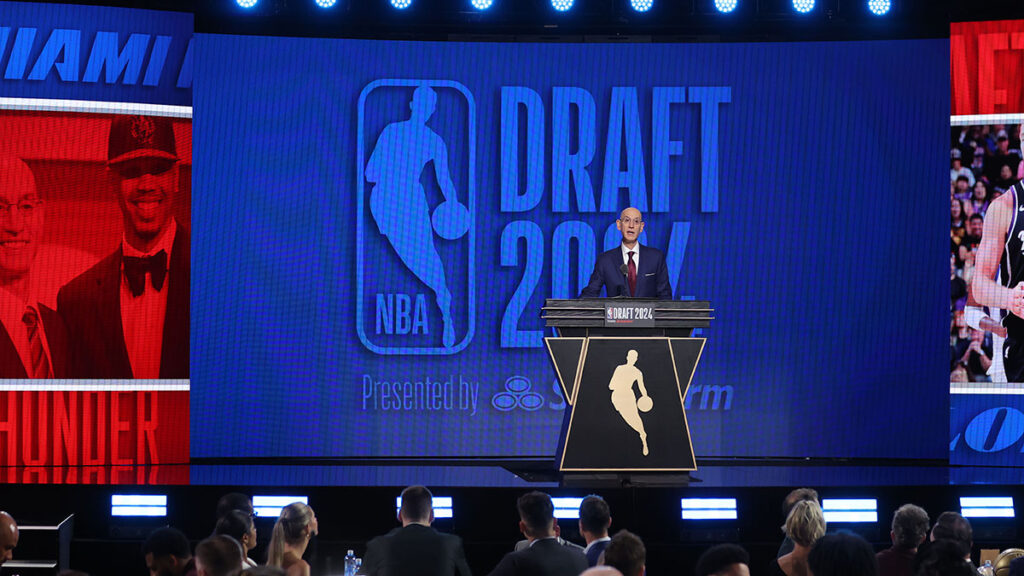The NBA Draft is always important for every team. But the 2025 draft, in particular, is a very important one for the Boston Celtics given their current situation.
The Celtics have one of the most expensive rosters in the league as a team in the second apron of the luxury tax. They might have to make a few moves in the offseason to shed salary and get below that threshold.
Our Celtics insider Chris Forsberg wrote about this topic last week:
“The Celtics are already committed to $228 million in contracts next season. They are nearly $20 million over the second apron, and that’s before addressing a pair of free-agents-to-be in Al Horford and Luke Kornet. The team is currently projected to have a $238 million luxury tax bill, which would push the team closer to a half billion total spend if the roster was maintained. The big question now isn’t how Boston keeps as much of its title core as possible, but instead, how does the team shed the necessary salary that will allow it to best compete when Tatum is healthy again?“
If the Celtics decide to move an important player or two in the offseason, replacing them with young, talented players on team-friendly contracts would be the ideal outcome. And the best way to find players who fit that description is through the draft.
The Celtics have the No. 28 overall pick in the first round of the 2025 NBA Draft, and they also own the second pick (No. 32 overall) in the second round. The hit rate on picks this low in the draft isn’t sensational, but there are always good players to be found.
And to the Celtics’ credit, they have done a good job finding value late in the first round in recent years.
Here are some of the best examples:
- 2018, Rob Williams (pick No. 27): Starting-caliber center who emerged into an elite defensive player.
- 2019, Grant Williams (pick No. 22): Reliable, versatile player off the bench who could shoot well from the outside.
- 2020, Payton Pritchard (pick No. 26): Won the Sixth Man of the Year Award this season.
- 2024, Baylor Scheierman (pick No. 30): Remains to be seen if he will be a regular part of the rotation, but he showed flashes of impressive 3-point shooting as a rookie.
Most drafts include players picked near the end of the first round, or early second round, who make a genuine impact as part of their team’s rotation not long into their careers.
In 2020 it was Jaden McDaniels. He was the No. 28 overall pick by the Los Angeles Lakers and was subsequently traded twice, ultimately landing with the Minnesota Timberwolves for his rookie campaign. McDaniels started all 82 games for the T-Wolves this season and averaged a career-high 12.2 points per game. He was selected to the All-Defensive second team last season.
Quentin Grimes has averaged 10.4 points per game in his career since being drafted No. 25 overall by the Los Angeles Clippers in 2021. He was traded to the Philadelphia 76ers during the 2024-25 season and averaged 21.9 points per game over 28 appearances.
Herb Jones was taken at No. 35 overall in the second round of the same draft. He’s one of the best defensive wings in basketball and made All-Defensive first team last season.
The Denver Nuggets drafted Christian Braun out of Kansas with the No. 21 pick in 2022. Braun made an instant impact on the Nuggets’ 2023 title team as a rookie and has since developed into one of their best players. He averaged a career-high 15.4 points per game on 39.7 percent 3-point shooting this season.
The Pacers got a starting guard in Andrew Nembhard with the first pick (No. 31 overall) in the second round in 2022. Nembhard has made a lot of clutch plays for the Pacers in their back-to-back trips to the Eastern Conference finals. He’s also shooting 49.5 percent from 3-point range in his playoff career.
The Jazz took Brice Sensabaugh at pick No. 28 in 2023, and he averaged a career-high 10.9 points per game on 42.2 percent 3-point shooting this past season.
It’s still pretty early to analyze the 2024 draft, but two early second-round picks — Kyle Filipowski (No. 32, Utah) and Jaylen Wells (No. 39, Memphis) — both made a good impact as rookies. Filipowski averaged 9.6 points and 6.1 rebounds per game, while Wells averaged 10.4 points per game and made 74 starts for a 48-win playoff team.
Almost all of these players came from established programs that consistently send players to the NBA, such as Duke, Kansas, Gonzaga, Houston, Alabama and Ohio State. Many of these players had NCAA Tournament experience, too.
It’s going to be tough for the Celtics to make trades and sign free agents as a team in the first or second apron. So if they’re going to build the roster depth required to be a title contender again soon, they must hit on their draft picks. It is absolutely essential for long-term success.
And as noted above, good players consistently fall to the end of the first round and early second round. Are these players superstars? Very rarely. But they can fill important roles on playoff-caliber teams.
The Celtics built a championship roster by drafting Jayson Tatum and Jaylen Brown. For the C’s to extend their title window, the draft is where they must shine again.
Read the full article here


